In February 1981, the Space Shuttle Program passed major milestones to prepare for the orbiter Columbia’s first flight. Teams at NASA’s Kennedy Space Center (KSC) in Florida and Johnson Space Center (JSC) in Houston successfully completed the wet countdown demonstration test and the flight readiness firing (FRF) of Columbia’s main engines. The Mission Control Center (MCC) at JSC completed the seventh and final full-duration simulation of the inaugural space shuttle mission, with the STS-1 crew of John W. Young and Robert L. Crippen. Young and Crippen continued training for the flight, including practicing shuttle landings at an alternate landing site in New Mexico. These milestones provided NASA with confidence in an April 1981 first launch.
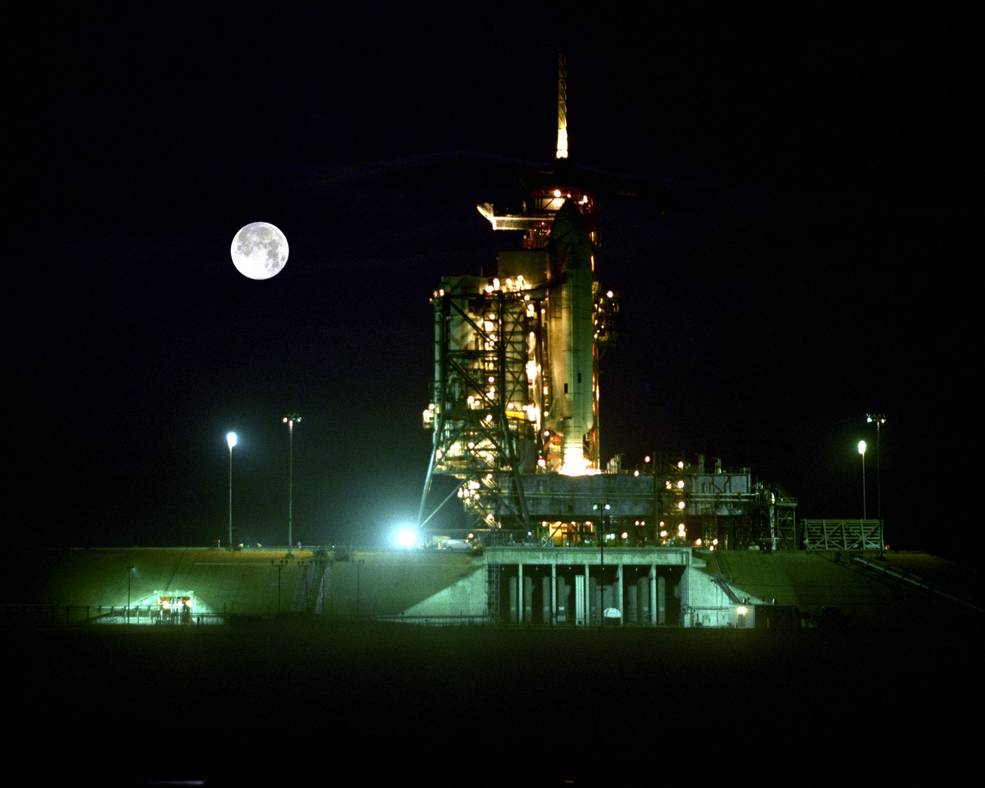
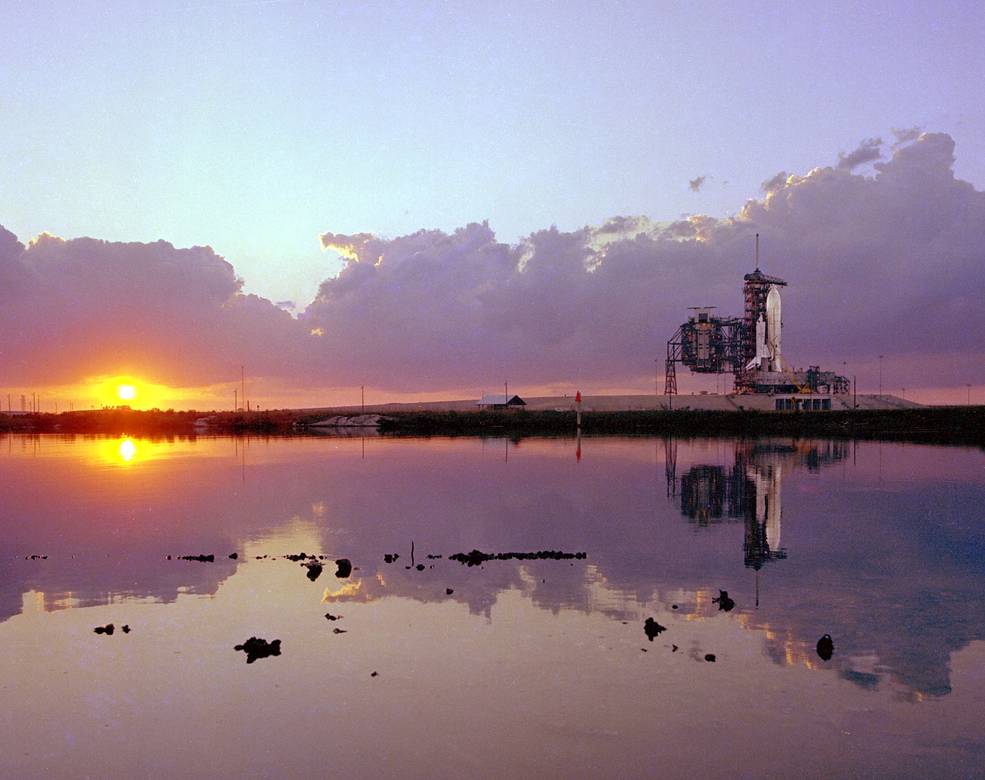
Left: At NASA’s Kennedy Space Center’s (KSC) Launch Pad 39A, space shuttle Columbia
awaits the Flight Readiness Firing, with the full Moon behind it. Right: Sunrise at KSC
with space shuttle Columbia on Launch Pad 39A.
Successful completion of a critical static test firing of a cluster of three space shuttle main engines on Jan. 17, 1981, at the agency’s National Space Testing Laboratories in Bay St. Louis, Mississippi, cleared the way for the FRF. The wet countdown demonstration test leading up to the FRF began in the evening of Feb. 16 at the T-53-hour mark. Controllers in Firing Room 1 of KSC’s Launch Complex 39, led by STS-1 Launch Director George F. Page, monitored all aspects of the countdown, as did engineers in JSC’s MCC. Several delays attributed to the learning process rather than any significant hardware or software problems with the vehicle or ground systems resulted in the FRF slipping one day to Feb. 20.
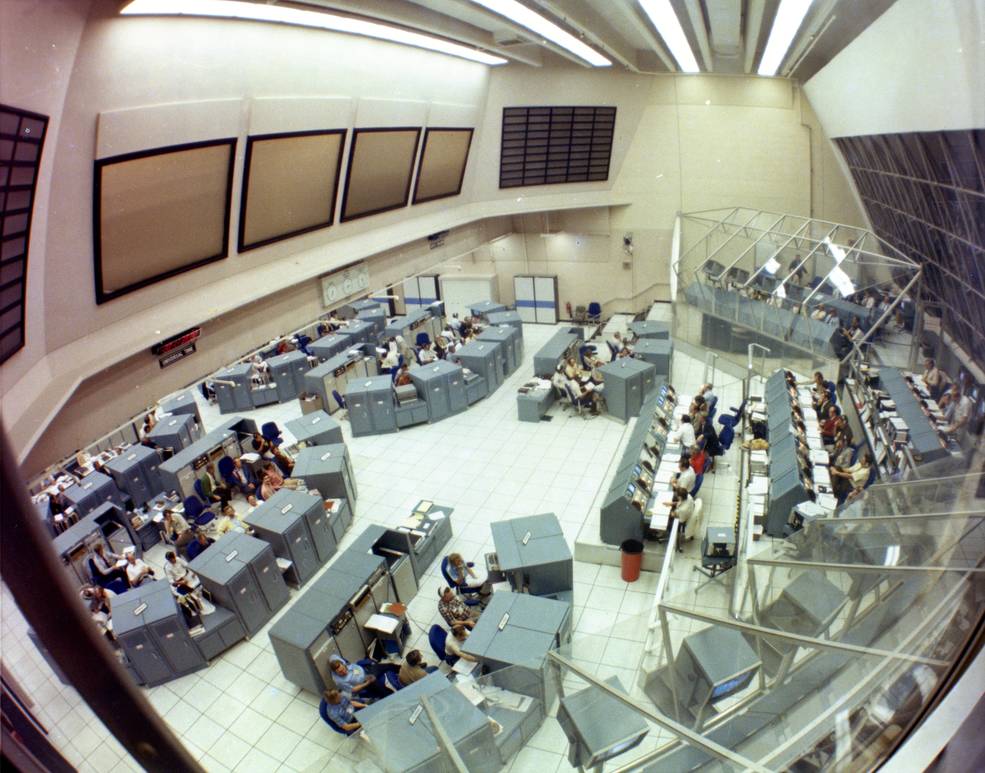
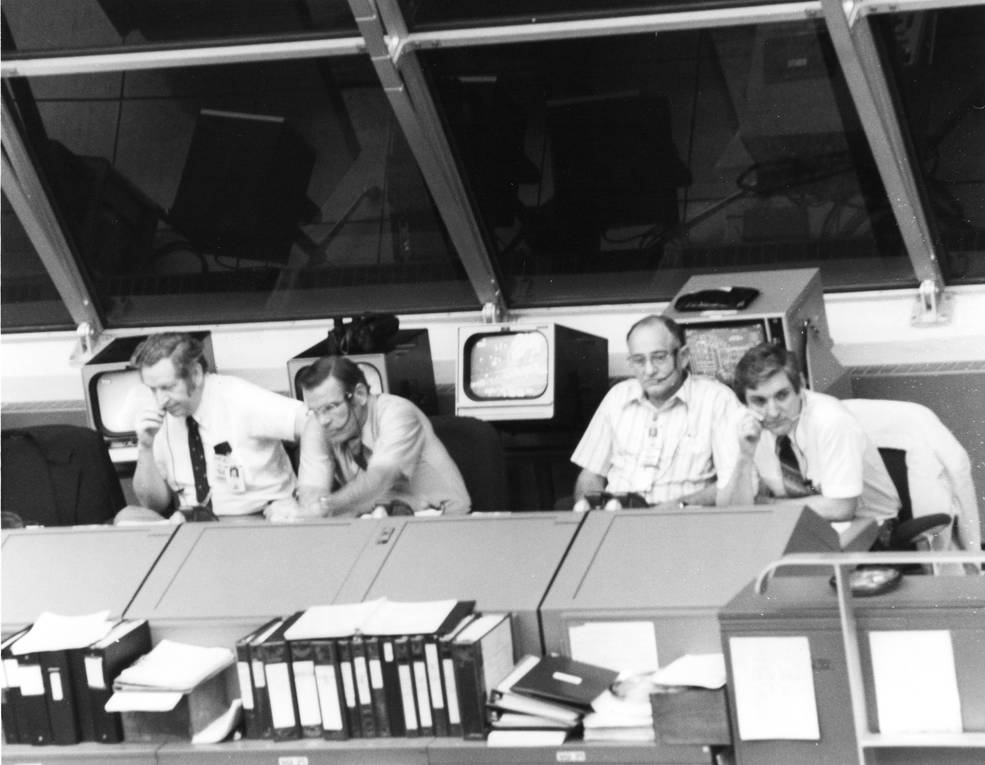
Left: In NASA’s Kennedy Space Center’s (KSC) Firing Room 1, controllers monitor the wet countdown demonstration test leading to the Flight Readiness Firing. Right: In Firing Room 1, KSC Director Richard G. Smith, left, George F. Page, STS-1 Launch Director, Graydon F. “Bo” Corn, cryogenics branch chief, and Robert Reed, orbiter project engineer, monitor the progress of the wet countdown demonstration test.
At Launch Pad 39A, at T-5 hours, engineers began loading the external tank with 225,000 pounds of liquid hydrogen and 1.4 million pounds of liquid oxygen. At T-9 minutes, the ground launch sequencer computer took over controlling the final steps of the countdown. At T-3.8 seconds, the main engine start sequence began, with the engines coming to life at 120-millisecond intervals, quickly reaching 100 % thrust. To simulate events during an actual launch, the computer gimballed or swiveled each engine, and for one second, reduced their thrust to 94 % before throttling to full power. After 20 seconds, the sequencer commanded all three engines to shut down. The first rocket ignition on Launch Pad 39A since the Apollo-Soyuz Test Project liftoff in 1975 was a success and cleared one major hurdle toward the launch of STS-1. Young and Crippen watched the test from separate aircraft flying above KSC, prompting Young to comment, “Well, it looks like it was successful.” Acting NASA Administrator Alan M. Lovelace went a bit further, saying, “This was just a superb test,” and KSC Director Richard G. Smith compared the test to “the final playoff game before the Super Bowl.”
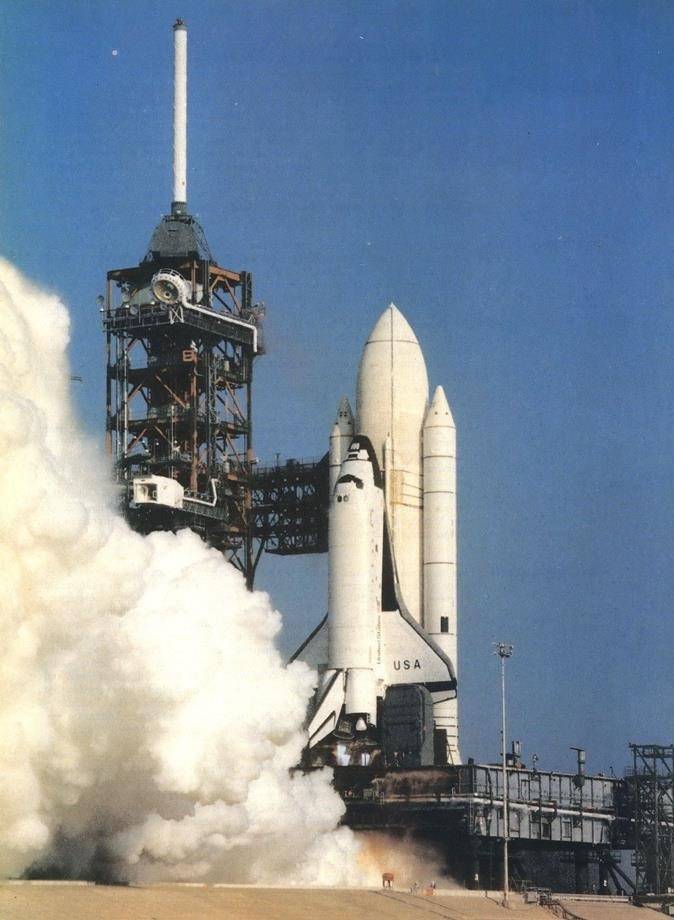
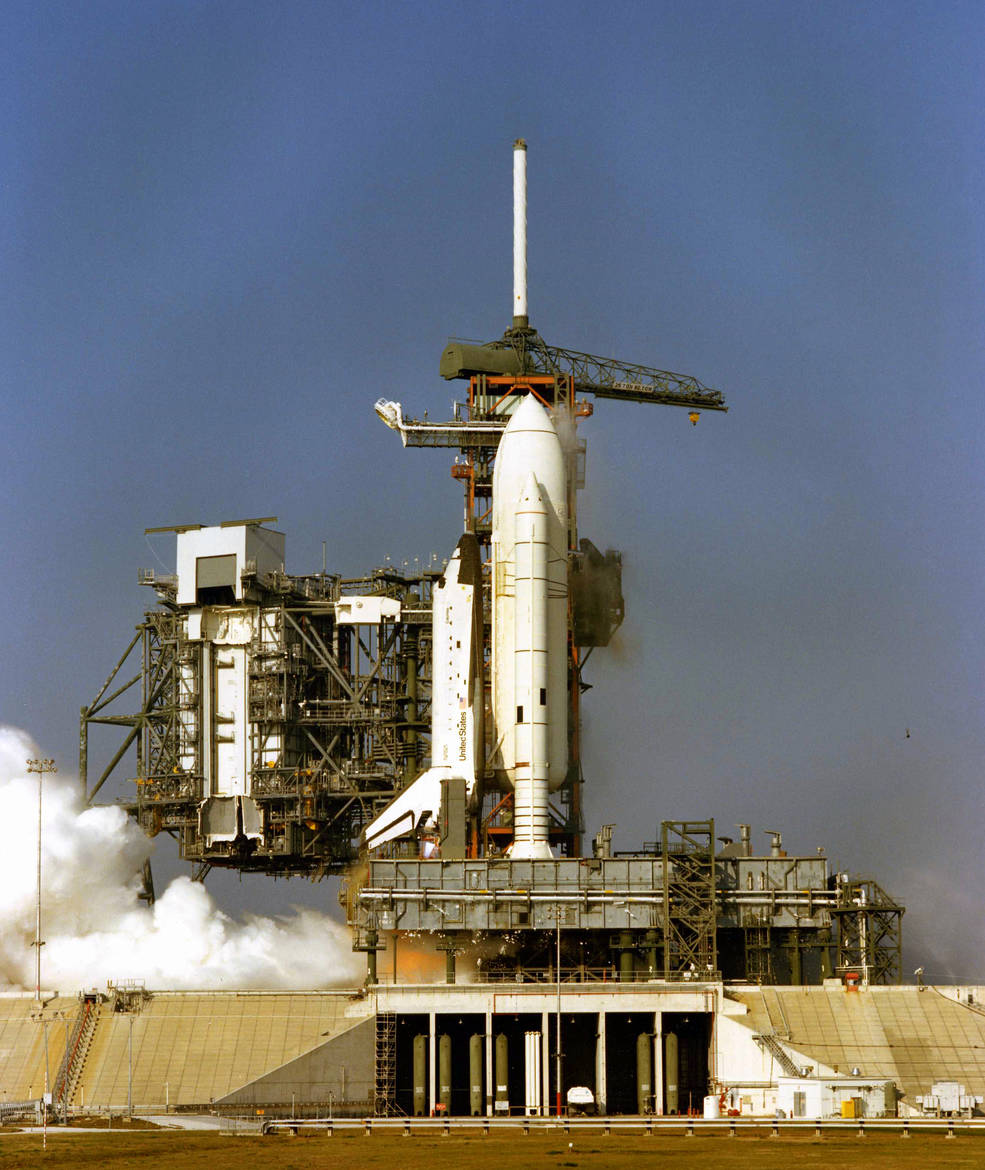
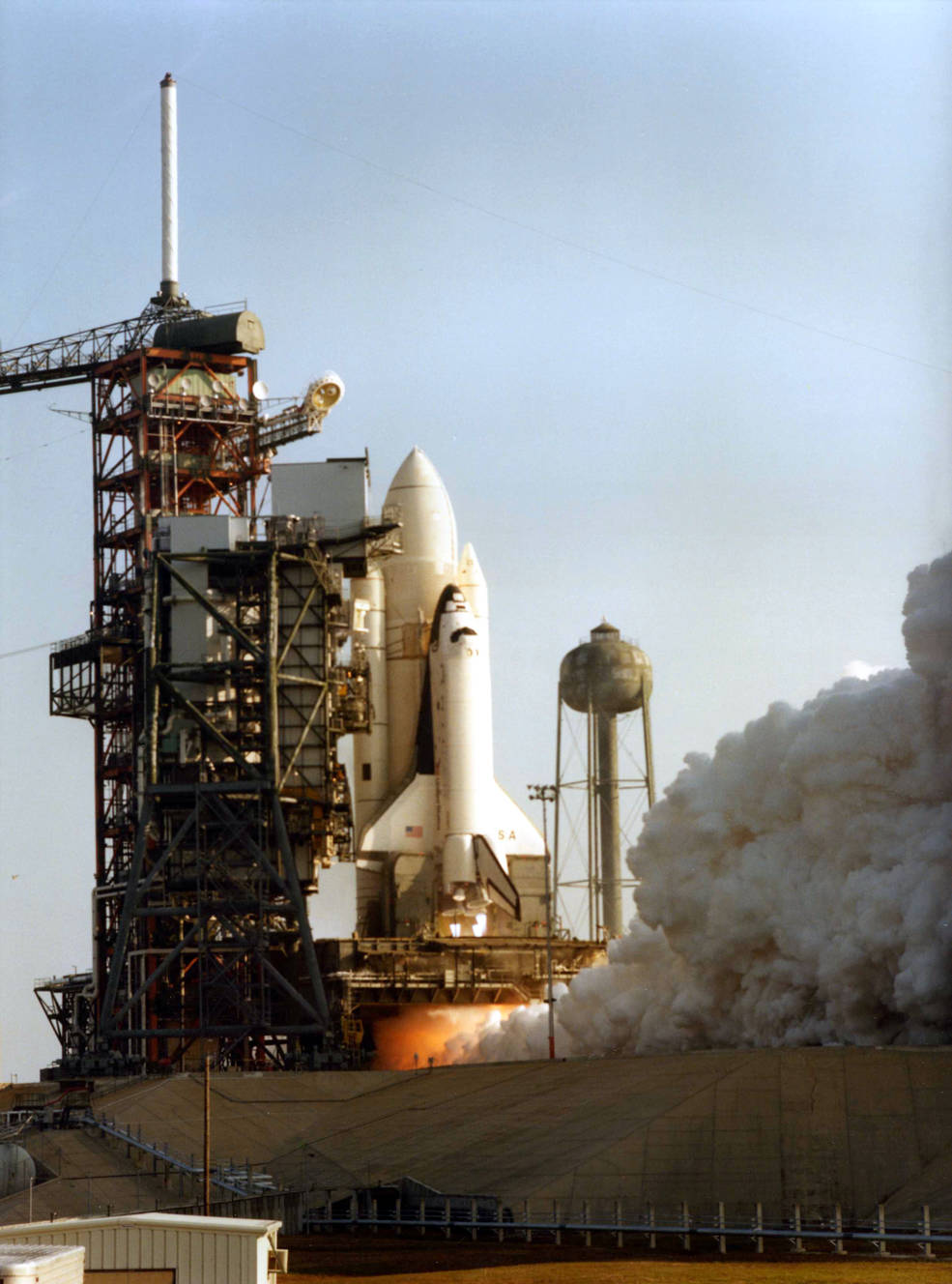
Three views of space shuttle Columbia during the 20-second Flight Readiness Firing.
At JSC, flight controllers in the MCC completed the seventh and final full-duration 54-hour simulation of the STS-1 mission Feb. 24-26. Under the leadership of Flight Directors Neil B. Hutchinson, Charles R. “Chuck” Lewis, and Donald R. Puddy, three teams of controllers followed the STS-1 flight plan, with the simulation team introducing anomalies. Young and Crippen participated in the fixed-base Shuttle Mission Simulator at JSC and responded successfully to all the anomalies presented to them. In case inclement weather at the prime landing site at Edwards Air Force Base in California resulted in a diversion to an alternate landing site, STS-1 astronauts Young and Crippen practiced making approaches and landings at JSC’s facilities at the Northrup Strip, now White Sands Space Harbor, in New Mexico. They flew the Shuttle Training Aircraft, a Grumman Gulfstream II heavily modified to respond like a descending space shuttle orbiter, during these training exercises.
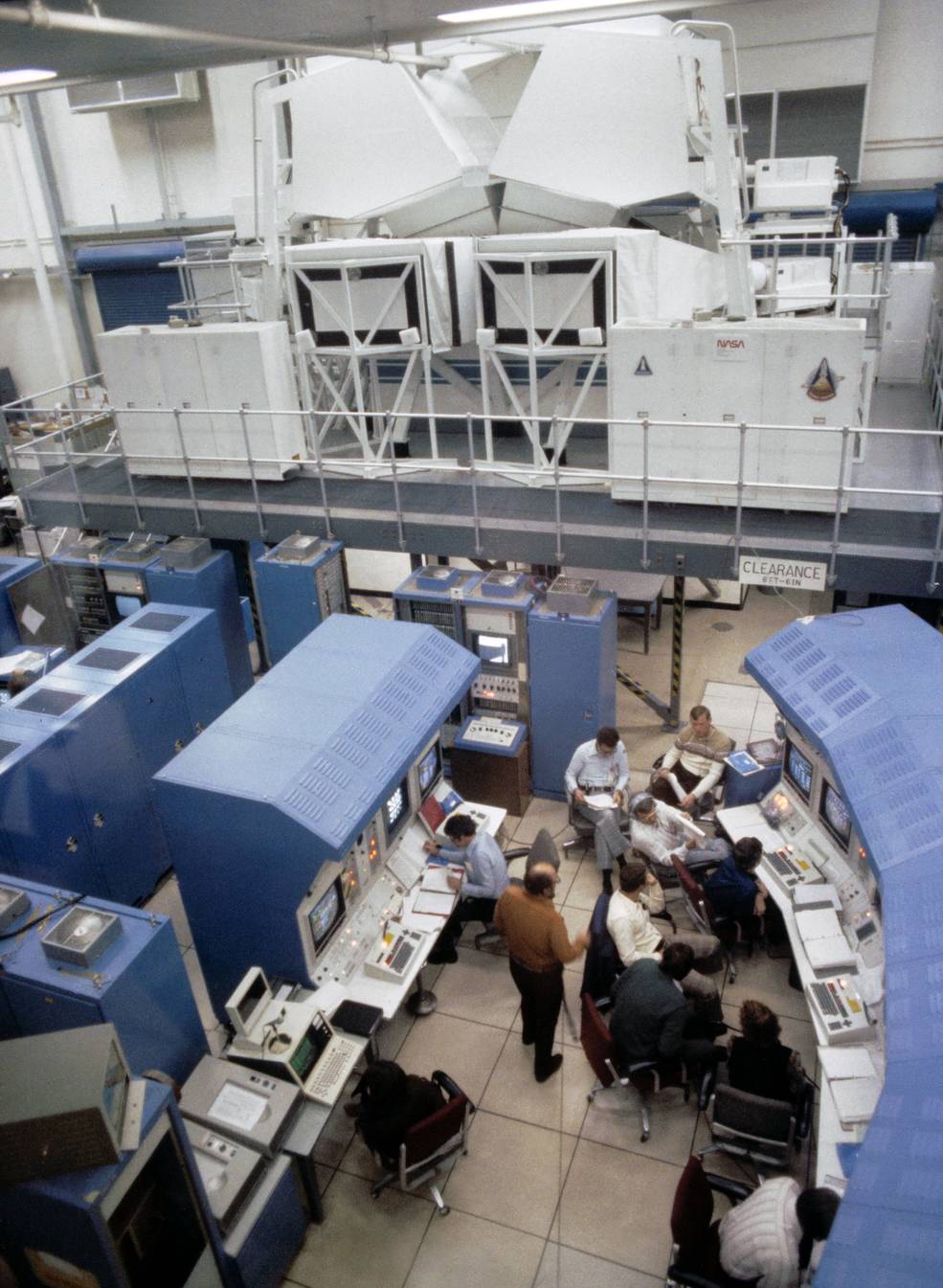
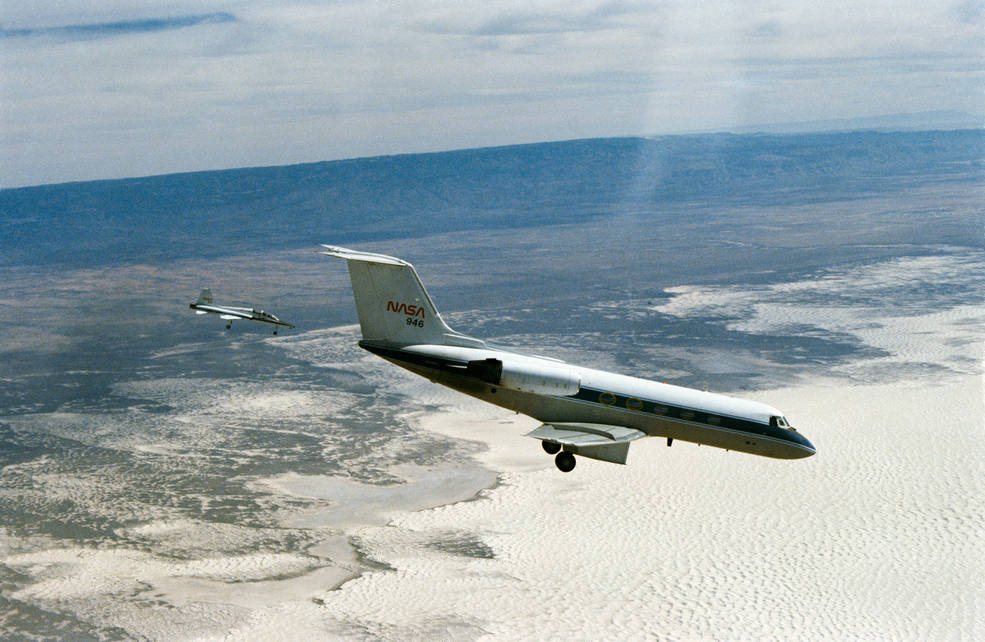
Left: The space shuttle fixed-based simulator at NASA’s Johnson Space Center in Houston. Right: STS-1 astronauts John W. Young and Robert L. Crippen simulating shuttle landings in a Shuttle Training Aircraft at Northrup Strip, now the White Sands Space Harbor, in New Mexico.
To be continued…
Significant world events in February 1981:
February 5 – Largest Jell-O ever made, 9,246 gallons of watermelon flavor, in Brisbane, Australia
February 6 – Former Beatles Paul McCartney, Ringo Starr, and George Harrison record “All Those Years Ago,” a tribute to John Lennon
February 15 – Richard Petty wins a record seventh title at the Daytona 500
February 24 – Prince Charles announces his engagement to Lady Diana Spencer
February 27 – Stevie Wonder and Paul McCartney record “Ebony and Ivory”
February 28 – Calvin Murphy of the Houston Rockets sets an NBA record with 78 consecutive free throws

























